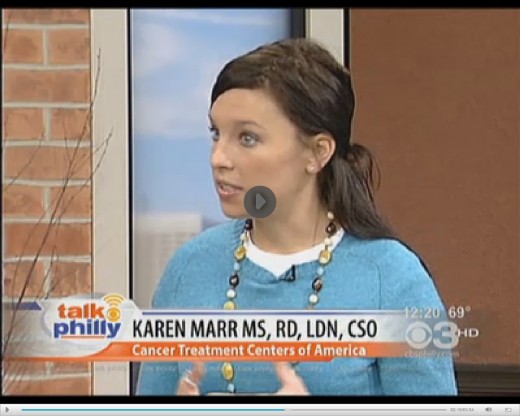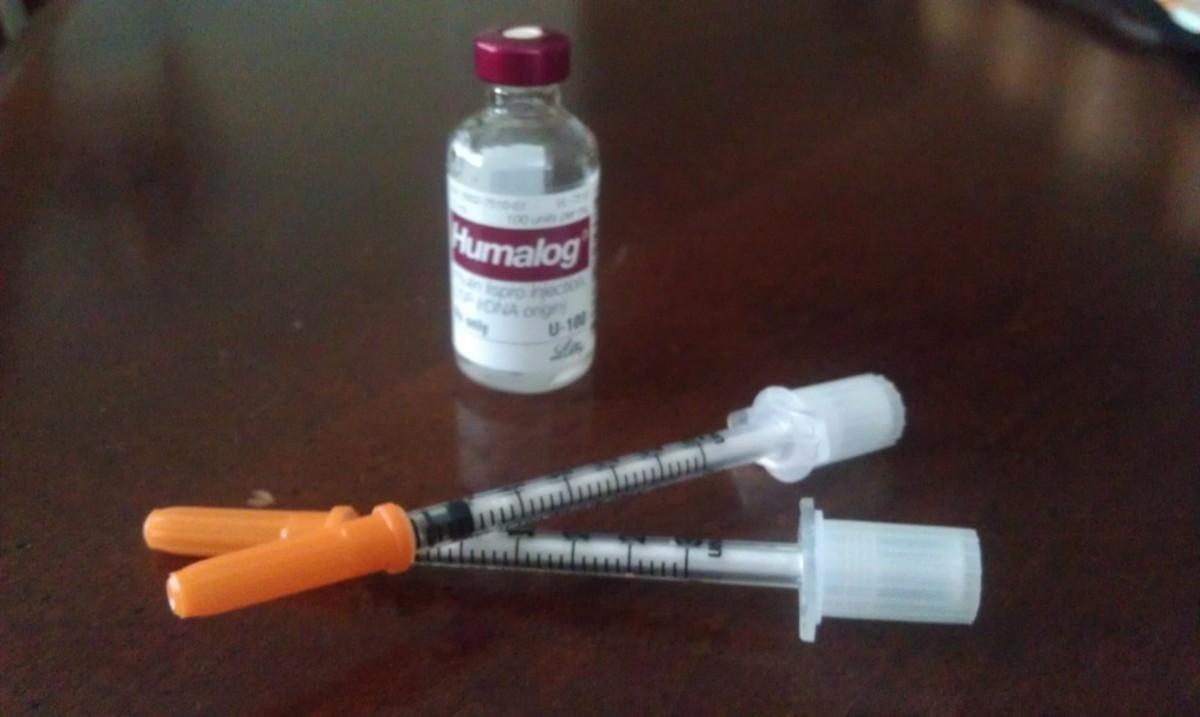The Many Health Benefits of Enough Vitamin D
Registered Dietition Working at Cancer Treatment Centers of America (CTCA) That Uses Vitamin D


Vitamin D Health Benefits
There are many studies being done on the health benefits of getting enough vitamin D. This was written March 6, 2012. Vitamin D is also called the sunshine vitamin but it is not really a vitamin since the skin can create it if you get enough sunshine. Links on this webpage are blue. You can right click the BACK button for a menu of webpages that you were at before.
Michael Holick PhD, MD treats humans and zoo animals with vitamin D. He is the country's leading expert on vitamin D. He heard that vitamin D3 is more effective than vitamin D2 so he tested it out with 3 different ways and found there was no difference. To hear him explain this, look at his hour video below and go to 36 minutes on it where he explains the above in detail.
Since the skin is creating vitamin D to benefit other areas, it is a steroid hormone. In the last 3 years 7 different MDs have written 7 books on vitamin D. They start off by saying that vitamin D is a hormone not a vitamin making it a totally unique nutrient. With the abundance of sunshine the body can make a huge amount of this hormone. Also the title uses the word enough since the amount needed for bone health is not nearly enough to help with other things.
[The links are in blue. You can right click the BACK button to see a list of the previous websites that you were and click one of them.] In 2007 Time Magazine recognized vitamin D as one of the top 10 medical breakthroughs of the year.
Here is the very latest information from January 7, 2013. If pregnant mothers take it and give vitamin D to their newborn babies, they can prevent autism and type 1 diabetes.
I use the most definitive and authoritative sources that I can find for information in my articles. Like the information about the above comes from the U.S. National Library of Medicine (PubMed), webmd.com, Psychology Today Magazine, Scientific American Magazine and an MD that wrote a book on vitamin D.
It also includes a study of 10,000+ babies in Finland being given 2,000 IU of vitamin D daily for the first year of their life according to The Lancet. To see this information go to this article: Type 1 Diabetes, Like Autism, is Totally Preventable.
DEFINITIVE means Done or reached decisively and with authority. AUTHORATATIVE means 1.Able to be trusted as being accurate or true; reliable: "clear, authoritative information". 2.(of a text) Considered to be the best of its kind and unlikely to be improved upon. Below is information from Johns Hopkins Medicine and Harvard School of Public Health.
The daily amount that you need to get is being debated but one group says that you need lifeguard levels. This refers to the amount that would get if you were in a bathing suit and out in the sun for many hours daily like a lifeguard. Lifeguards in Australia have the lowest rates of skin cancer. Since sunlight and the sunlight vitamin or hormone is free, even the poorest people can get plenty of it.
Depression and Vitamin D
The disorder known as SAD has been around for a while. Psychology Today has an article saying that the increase in depression rates among young people is due to the use of sunscreen. It blocks most of the UV-light that creates vitamin D. So people are paying money (for sunscreen) to be depressed. For a link to this article and great pictures of celebrities getting free vitamin D see Lack of Vitamin D Causes Depression.
Decades ago in the United States there was an epidemic of children with a serious bone deforming disease called rickets. It was totally cured with vitamin D, but it is now making a comeback. Partly due to what dermatologists are saying, people are not getting enough sunlight. People will talk about how there were other vitamins that were over hyped but vitamin D is a hormone, not a vitamin so this is a unique area of research.
People coming from England over to America were on ships and many were dying of scurvy. This was due to a lack of vitamin C. So they cured it by taking citrus fruit with them on the ship that they ate. A favorite was limes so a nickname for people from England is Limeys.
Andrew Weil M.D. graduated Harvard University and Harvard Medical School. He said:
Increasing the amount of vitamin D in the body can prevent or help treat a remarkable number of ailments, from obesity to arthritis, from high blood pressure to back pain, from diabetes to muscle cramps, from upper respiratory tract infections to infectious disease, and from fibromyalgia to cancers of the breast, colon, pancreas, prostate and ovaries.
Cancer and Vitamin D
Cancer is getting the most attention for what vitamin D can do. Moores Cancer Center is proposing that cancer is a vitamin D deficiency or insufficiency. The amount of vitamin D is much more than is required for bone health. Doctor of Public Health, Cedric Garland, says that enough vitamin D will virtually eradicate breast cancer. For a lot more on this, see my article Cancer and Power of Vitamin D. See video under Karen Marr picture to hear her talking about vitamin D and cancer.
Type 1 Diabetes and Vitamin D
Type 1 diabetes is the second most common chronic disease in children, second only to asthma. Every day, 1.5 million Americans deal with type 1 diabetes and its complications. "Research suggests that childhood type 1 diabetes may be preventable with a modest intake of vitamin D3 (1000 IU/day) for children, ideally with 5 to 10 minutes of sunlight around noontime, when good weather allows, "said Garland. "Infants less than a year old should not be given more than 400 IU per day without consulting a doctor." Note the study in Finland with newborn babies, above, where it reduced type 1 diabetes by 80%.
Webmd.com has an article called Vitamin D May Cut Risk of Type 1 Diabetes . This article says:
June 5, 2008 -- There is new evidence that children who get plenty of vitamin D, either from supplements or sun exposure, have a reduced risk of developing type 1 diabetes.
Vitamin D supplementation during infancy was associated with a 29% reduction in type 1 diabetes risk in a recently published research analysis.
For some more promising information about type 1 diabetes and vitamin D see How Much Vitamin D Should You Take Daily for more on this controversial and complex issue.
Vitamin D and Heart Disease
Harvard School of Public Health says:
The Health Professional Follow-Up Study checked the vitamin D blood levels in nearly 50,000 men who were healthy, and then followed them for 10 years. (20) They found that men who were low in vitamin D were twice as likely to have a heart attack as men who had adequate levels of vitamin D. Other studies have found that low vitamin D levels were associated with higher risk of heart failure, sudden cardiac death, stroke, overall cardiovascular disease, and cardiovascular death. (21-24) How exactly might vitamin D help prevent heart disease? There’s evidence that vitamin D plays a role in controlling blood pressure and preventing artery damage, and this may explain these findings.
Johns Hopkins Medicine had an article called Vitamin D and the Heart. There was a link to it on this article (above) but they have either moved the article or taken it down. I did a search for this in quotes and they have moved it to here-- Vitamin D and the Heart. It says:
A growing number of studies point to vitamin D deficiency as a risk factor for heart attacks, congestive heart failure, peripheral arterial disease (PAD), strokes, and the conditions associated with cardiovascular disease, such as high blood pressure and diabetes.
Vitamin D acts as a hormone, regulating more than 200 genes throughout the body. It does an impressive amount of work. For example, vitamin D:
- Keeps abnormal cells from multiplying in breast and colon tissues
- Helps regulate blood pressure in the kidney
- Helps regulate blood sugar levels in the pancreas
Vitamin D Prevents Colds and Flu
Scientific American says:
People with the worst vitamin D deficiency were 36 percent more likely to suffer respiratory infections than those with sufficient levels, according to the research in this week's Archives of Internal Medicine. Among asthmatics, those who were vitamin D deficient were five times more likely to get sick than their counterparts with healthy levels.
For more information about preventing or curing colds and flu, see this article.
Vitamin D and Arthritis
For this topic let us see what Johns Hopkins Medicine says:
Unlike other vitamins, vitamin D is not just a simple nutrient. It's also an active steroid hormone that binds to receptors in a host of vulnerable tissues -- including the joints affected by arthritis -- and works to keep these tissues healthy.
According to a study presented at the 2008 European Union League Against Rheumatism (EULAR) meeting in Paris, nearly 75 percent of patients who presented at a rheumatology clinic -- including those who were subsequently diagnosed with inflammatory joint diseases, soft-tissue rheumatism, uncomplicated musculoskeletal backache or osteoporosis -- were deficient in vitamin D.
Vitamin D and Obesity
Daniel Amen M.D. is known as the brain doctor. He has a book called Use Your Brain to Change Your Age . It tells about the different kinds of over-eaters like the compulsive, impulsive, compulsive-impulsive, the anxious over-eater and the sad over-eater. For the last one, he said that they are likely to be low in vitamin D and they should get more vitamin D to help to lose the excess weight.
Getting Vitamin D
You cannot get nearly enough vitamin D from food, so if you cannot get it from sunlight, then you can take a vitamin D supplement. You cannot get too much vitamin D from sunlight but you can get too much from supplements but it is rare. To avoid this do not take more than 15,000 IU of vitamin D a day unless directed to by a doctor. For most people they would have to take more than 5 times that much to get too much.
According to Michael Holick M.D. who is a professor of medicine, physiology and biophysics for Boston University, the sunlight produces other nutrients in the body that helps the vitamin D to work better. Now many give a simple formula for getting it from sunlight but it is as wrong as saying that you can buy any house in the United States for $50,000. An average house in Detroit costs $6,000 due to the economy and housing market.
Getting vitamin D from the sun is very complex since it depends on many factors. But the U.S. government figures out all these factors for each day and gives you the UV index for where you live on a certain day and time. Here is what I use to get the UV index. This is for tomorrow and it says that the UV index gets up to 7. Yesterday and before that, the highest it would get was 6.
When the UV index is over 3 you can get vitamin D from sunlight. But at this level I would suggest a half hour in the sunlight every day of the week or over an hour a day, 3 times a week. With a higher UV index, you can spend less time in the sunlight. But regardless of the huge myth and propagandat to get your money, sunlight is good for you. You can control how much you get to darken your skin so you will not have a problem with too much sunlight. Also I repeat, you cannot get too much vitamin D from sunlight.
Now if you are pale and fly down to the equator and stay out in the sun all day, the 3rd degree burns will probably kill you. But if you drink 10 gallons of water in 5 hours it will probably kill you. So you must use common sense so you do not get a sunburn that can be very painful. I am white. Where I live the UV index gets up to 11 in the summer. I can sunbathe for an hour in the summer right around noon with the temperature over 100 degrees F and still feel fine. Note that this is possible due to very low humidity.
Now you can go to the webpage above that is set for my location and you can set it for your location. When you first give it your location, it will give you the weather. So you need to check for "UV index" at the bottom of a chart and click on that. Then you can click on "hourly report" to see what it will be every hour tomorrow or the next day. It can also show you today but only later on than the time it is now. See the article The Many Health Benefits of sunbathing or Sunlight.
At the bottom of this article, Vitamin D Prevents Breast Cancer, it gives you information from The Lancet, the world's leading general medical journal and specialty journals in Oncology, Neurology and Infectious Diseases, about sunlight protecting you from skin cancer (melanoma). Also it has actual numbers from the CDC (Centers for Disease Control and Prevention) showing how ridiculous it is to say that sunlight causes skin cancer. Below Dr Oz says on the video that cod liver oil is a good source of vitamin D. Actually that is not correct since it also contains a large amount of vitamin A and vitamin A interferes with the absorption of vitamin D.
See video below by Dr. John Cannell. Wikipedia says:
John Jacob Cannell, M.D. (born June 21, 1948, Washington, D.C.) is an American activist, most notably taking a stand on the Vitamin D deficiency epidemic. In the past, he contributed to such areas of public debate as Black Lung legislation, and the problems with educational testing. In recent years, Dr. Cannell has taken an active role in educating the public about the health benefits of Vitamin D. He is the founder of the Vitamin D Council.
In video below Dr Pendergast, says that people do not get too much vitamin D. They find that it is always caused by something else.
Take 1 minute to watch this. Do you have the signs of vitamin D deficiency?
Dr Oz Interview: 100 Billion Americans Have Vitamin D deficiency! [actually 100 million]
Vitamin D Books and Supplements. Note vitamin D2 is the vegetarian form of vitamin D and Dr Holick found it worked just as good as D3 even though some say no.









